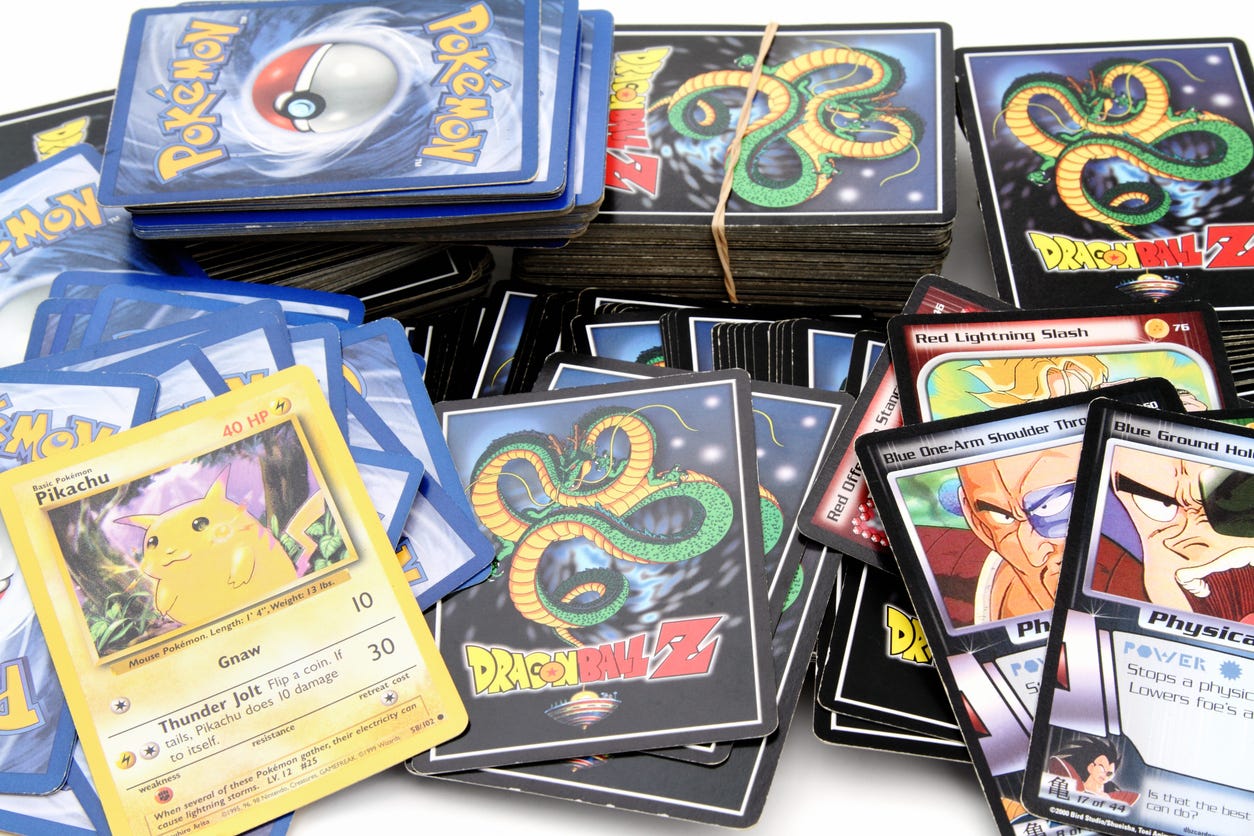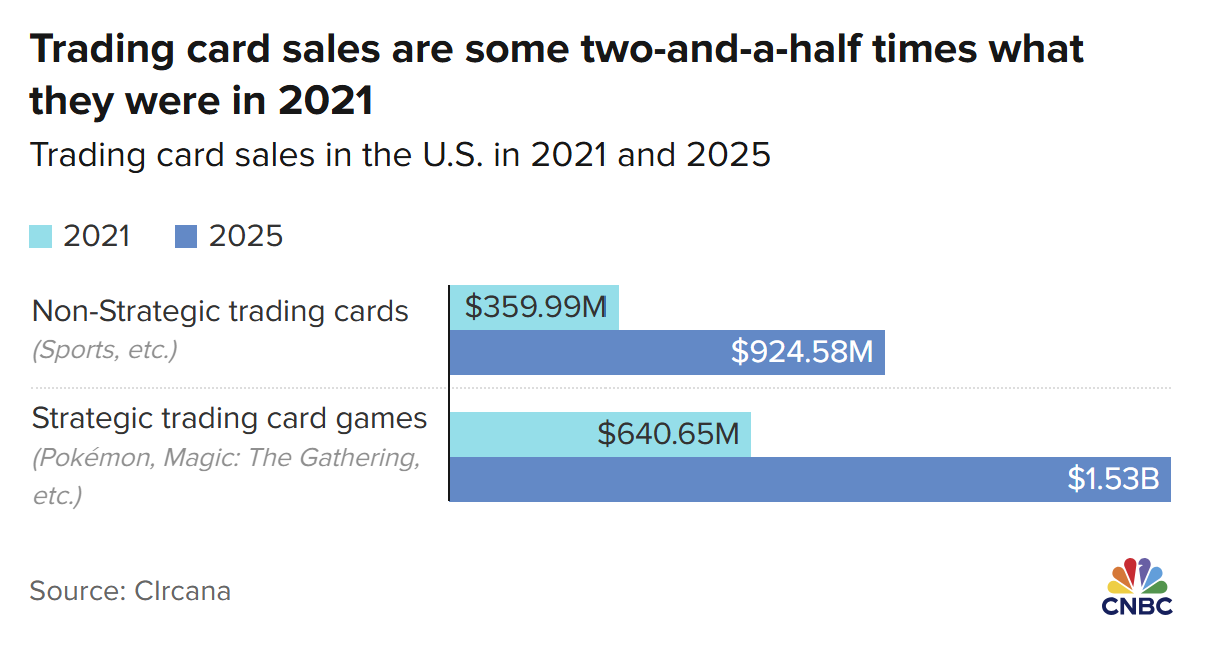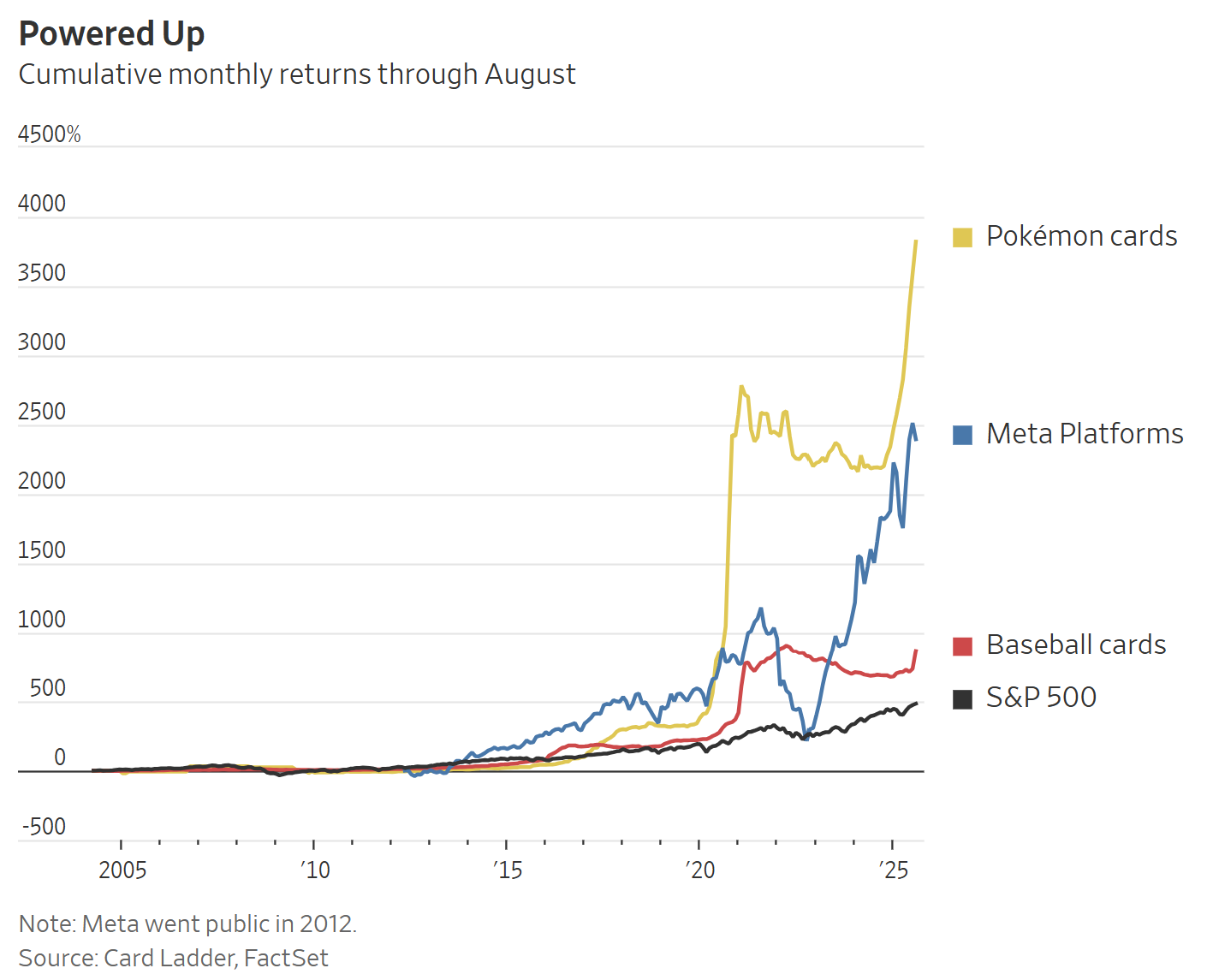
Major retailers are witnessing a massive growth in trading card sales, from sports cards to Pokémon. These sales are being driven by both Homelander kids and older Millennials.
—CNBC
Over the last few years, we have written several articles on the rise of collectible toys from LEGO to Labubu. Not only are they popular with Homelander children, but Millennial adults have continued to drive sales. (See “LEGO: New Stress Reliever for Adults” and “Millennials Are Fueling a $42 Billion Toy Empire.”) And now the latest craze has arrived: trading cards.
Major retailers are reporting explosive growth. Target says trading-card sales are up +70% YTD, with revenue on track to hit $1B by year-end. Walmart Marketplace reports an even bigger surge: between February 2024 and June 2025, trading-card sales jumped +200%, and Pokémon sales have grown more than tenfold.
According to market researcher Circana, the trading-card market in 2025 will be about two-and-a-half times the size it was in 2021. Strategic trading card games, such as Pokémon and Magic: The Gathering, are expected to rise from $641M to $1.53B, a +139% jump. And non-strategic trading cards, like sports cards, are expected to surge from $360M to $925M, a +157% jump. The two core demographics driving the boom are Homelanders and late-wave Millennials, ages 8 to 28.

Trading cards have been around for decades. So why are sales exploding now? Four major forces are driving the surge.
Nostalgia. Every generation eventually reaches the age when the pop culture of their youth becomes emotionally magnetic. For Gen X, Ready Player One and Stranger Things tapped into 1980s nostalgia. Today, Millennials are rediscovering the strategic card games they grew up with in the 1990s. (See “Pokémon Go Captures Millennial Nostalgia.”)
Physicality. Millennials continue to seek tangible fandom, objects that counterbalance their hyper-digital lives. It’s the same trend powering the revival of vinyl. (See “Vinyl Overtakes CDs.”) Physical cards offer a way to express identity, display loyalty to favorite franchises, and collect something real.
Community. Strategic card games actively foster in-person gatherings, from weekly shop tournaments to bar-hosted game nights. These events create the sense of community and shared experience that Millennials increasingly crave.
Lotto Tickets. A growing share of buyers treat trading cards as speculative assets, hoping to pull rare hits they can resell at a profit. Since 2004, Pokémon cards have delivered a cumulative monthly return of +3,821%. And some brands now design for scarcity. Magic: The Gathering famously printed a single “One Ring” card for its Lord of the Rings series; Post Malone bought it from a lucky fan for $2 million.

Source: WSJ



